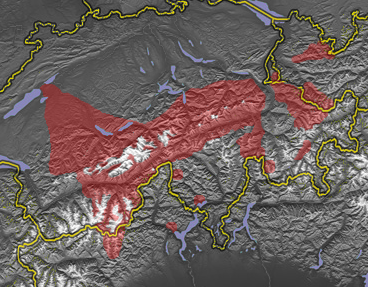  HomeFurnishingsStores HomeFurnishingsStores
|

|
Sigma KEE - WalserLanguage

|
|
walser language
|
|
The WalserLanguage is an AllemannicLanguage of Switzerland. SIL code: WAE. ISO 639-2: gem. Population: 10,000 to 20,000 speakers in Switzerland out of 21,900 population (1980 C. Buchli). Population total all countries: 20,000 to 40,000. Region: Bosco-Gurin, Canton Ticino, Wallis, Simplon, Graubunden, Obersaxen, Valsertal (Vals, St. Martin), Safiental (Valendas, Versam, Tenna, Safien), Rheinwald (Medels, Nufenen, Splngen, Sufers, Hinterrhein, Avers), Schanfigg (Arosa, Langwiesn), Albula (Mutten, Schmitte Wiesen), Landquart (Davos, Klosters, Furna, Says, St. Antonien, Valzeina). 26 communities in Switzerland, and 7 former ones. Also spoken in Austria, Italy, Liechtenstein. Alternate names: WALSCHER. Comments: Ancestors came from the Wallis Canton between the 12th and 13th centuries. Close but different from Schwytzertusch spoken in Wallis Canton in Switzerland. Different from Cimbrian, Mocheno, or Bavarian. Also spoken in: Austria. (Language name: WALSER.) Population: 5,000 to 10,000 in Austria (1995 C. Buchli). Alternate names: WALSCHER. Comments: Ancestors came from the Wallis Canton between the 12th and 13th centuries. Close but different from Schwytzertusch. Different from Cimbrian, Mocheno, or Bavarian. Also spoken in: Italy. (Language name: WALSER.) Population: 3,400 in Italy (1978 Fazzini). Alternate names: WALSCHER. Comments: Ancestors came from the Wallis Canton between the 12th and 13th centuries. Close but different from Schwytzertusch. Different from Cimbrian, Mocheno, or Bavarian. All ages. Used for children's services in church. In Valle d'Aosta it has been influenced by Franco-Provencal and Piemontese, elsewhere in Italy by Italian. Investigation needed: bilingual proficiency in Italian. Also spoken in: Liechtenstein. (Language name: WALSER.) Population: 1,300 in Liechtenstein (1995 C. Buchli). Alternate names: WALSCHER. Comments: Ancestors came from the Wallis Canton in Switzerland. Close but different from Schwytzertusch. Different from Cimbrian, Mocheno, or Bavarian.(extract from http://www.ethnologue.com/)
|
|
Relationships
|
|
|
|
| Instances | allemannic language | Of the eight UpperGermanLanguages, one is classified as an AllemannicLanguage.(extract from http://www.ethnologue.com/) |
| | content bearing physical | Any Object or Process that expresses content. This covers Objects that contain a Proposition, such as a book, as well as ManualSignLanguage, which may similarly contain a Proposition. |
| | entity | The universal class of individuals. This is the root node of the ontology. |
| | german group language | |
| | germanic language | A GermanicLanguage is any of 58 closely related IndoEuropeanLanguages spoken in the UnitedKingdom and northern and central Europe.(extract from http://www.ethnologue.com/) |
| | human language | The subclass of Languages used by Humans. |
| | indo european language | There are 433 languages categorized as an IndoEuropeanLanguage, forming a major family of the world's languages and including many of the most familiar languages of Europe and South Asia.(extract from http://www.ethnologue.com/) |
| | language | A system of signs for expressing thought. The system can be either natural or artificial, i.e. something that emerges gradually as a cultural artifact or something that is intentionally created by a person or group of people. |
| | language family | A LanguageFamily is group of SpokenHumanLanguages related through descent from a common ancestral language. (reference from https://en.wikipedia.org/wiki/Language_family) |
| | linguistic expression | This is the subclass of ContentBearingPhysical which are language-related. Note that this Class encompasses both Language and the the elements of Languages, e.g. Words. |
| | natural language | The subclass of HumanLanguages which are not designed and which evolve from generation to generation. This Class includes all of the national languages, e.g. English, Spanish, Japanese, etc. Note that this class includes dialects of natural languages. |
| | physical | An entity that has a location in space-time. Note that locations are themselves understood to have a location in space-time. |
| | upper german language | Of the 17 GermanGroupLanguages, eight are classified as an UpperGermanLanguage.(extract from http://www.ethnologue.com/) |
| | west germanic language | |
|
Belongs to Class
|
entity |
| | |
 |
Show full definition (without tree view)
Show full definition (with tree view)
|